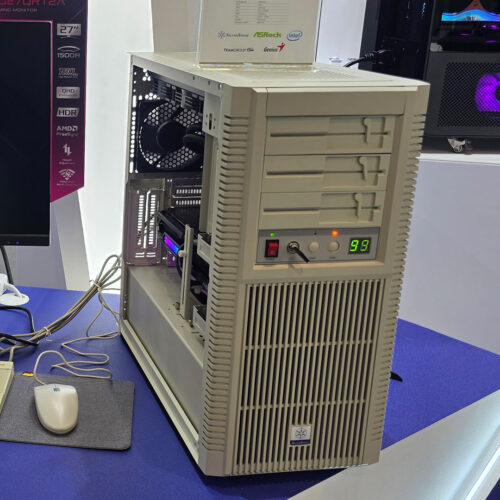Microsoft put an ex-Facebook exec in charge of a new AI unit. Internal memos reveal how it's going.

Microsoft
- Microsoft hired ex-Facebook global head of engineering Jay Parikh to lead a new AI unit called CoreAI.
- Internal memos Parikh has sent to employees reveal the unit's early ambitions and accomplishments.
- Parikh's initiatives focus on cultural shifts, operational improvements, and customer focus.
Microsoft envisions an "age of AI agents," and CEO Satya Nadella recently tapped one of Mark Zuckerberg's former top lieutenants to bring it to reality.
In January, Nadella put Jay Parikh in charge of a new AI unit called CoreAI, central to Microsoft's ambition to help developers build digital personal assistants capable of taking over tasks from human workers.
Amid Parikh's first Microsoft Build developer conference in this new role, internal memos reveal his goals for the unit, its early accomplishments, and his advice to address what he sees as problems within the company. Microsoft declined to comment.
A fresh perspective for the 'next phase of Microsoft'
Behind the scenes at Microsoft, Nadella prides himself on hiring outside talent from other big technology companies to add fresh perspective and giving them wide latitude to change how things are done, several people close to the CEO told BI.
Those reports include Charlie Bell, who helped build Amazon's cloud from its earliest days before defecting to Microsoft to become its security boss, and AI CEO Mustafa Suleyman, an ex-Google executive who joined the company from AI startup Inflection.
Parikh joined their ranks in October after running cloud security company Laceworks, acquired in 2024. He previously was vice president and global head of engineering for Meta. Zuckerberg has publicly credited Parikh for many technological achievements during his 11-year tenure at the company.
When Nadella announced Parikh's hiring in an email to employees, he wrote that the "next phase of Microsoft" would require "adding exceptional talent" from outside the company.
In January, when Microsoft reorganized to create a new organization under Parikh. The group, called CoreAI, combined teams from Parikh's new direct reports like Eric Boyd, a corporate vice president of AI platform; Jason Taylor, a deputy CTO for AI infrastructure; Julia Liuson, president of the developer division; and Tim Bozarth, a corporate vice president of developer infrastructure.
Nadella said at the time that Parikh would also work closely with the cloud-and-AI chief Scott Guthrie; the experiences-and-devices leader Rajesh Jha; Bell, the security boss; Suleyman, Microsoft's AI CEO; and Kevin Scott, the company's CTO.
A copy of Parikh's latest org chart viewed by Business Insider shows he has nearly 10,000 reports, most of whom (about 7,000) are in the developer division under Liuson.

Microsoft
Parikh's 'agent factory' vision
Four months in, Parikh has started to make his mark on Microsoft with a vision to create an AI "agent factory." In the early days of Microsoft, cofounders Bill Gates and Paul Allen had ambitions to create the world's first "software factory," a company full of programmers who would build everything from applications to operating systems.
Parikh said he met with Gates and discussed his own concept, a production line for AI agents and applications.
"Building our vision demands this type of culture — one where Al is embedded in how we think, design, and deliver," Parikh wrote in an April 14 email to his team. "The Agent Factory reflects this shift — not just in what we build, but in how we build it together. If we want every developer (and everyone) to shape the future, we have to get there first."
The memos reveal some of the developments at CoreAI since Parikh's arrival.
Since January, Foundry — Microsoft's AI platform for developers — has "delivered $337 million of favorable COGS (cost of goods sold) impact year-to-date, with a projected $606 million on an annualized basis," according to one of Parikh's memos.
Microsoft won new customers for its AI programming tool GitHub Copilot, deploying "5,000+ Copilot Business seats" for Fidelity with 5,000 more expected, another memo stated. Copilot Business sells for $19 per user per month, which would make the deal worth as much as $2.28 million annually at full price, though customers often get discounts for large deals. Fidelity declined to comment.
Startup Harvey AI, meanwhile, has agreed to a two-year $150 million commitment to consume Azure cloud services, according to one of Parikh's memos. Harvey AI declined to comment.
Making Microsoft think macro
The memos viewed by BI show how Parikh appears to be taking seriously his mandate to introduce a new perspective to the company and fix procedural problems that Microsoft may not be able to see that it has.
In a May 10 email to his team, Parikh said shifting the company's culture is "essential" to its future, and outlined progress toward priorities like accelerating the pace at which employees work, breaking down siloes to work better as one team, and making products more reliable and secure.
"One of my early observations coming into Microsoft is that we sometimes treat symptoms rather than systems," Parikh wrote in a May 5 email. "We often focus too much on the micro, which results in band-aids and bolt-ons vs taking a broader system view (which may mean thinking beyond what one team directly owns). This often leads to more complexity and operational burden. We'll help each other get better at this."
Parikh's plan to get Microsoft to focus on the macro is to create a "learning loop" with a debrief after every product launch, incident, customer meeting, internal meeting, or decision. He's started new processes to make this happen, according to the memos.
Parikh has an "Ops Review" series, going team by team to make specific improvements but also to "find common patterns of engineering pain that need broader improvements," he wrote. The reviews, he explained, focus on longer-term operational metrics to help with strategy. "We are zooming out and taking a more end-to-end view of a team's operational setup, creating space for an open discussion around what's working and what's not." The reviews began in April with the App Services team.
Also among Parikh's mandates: more customer focus. His organization is required to conduct reviews of major incidents, like outages, that could impact customers, and chart how quickly the teams identified the problem and deployed a fix.
He also started "get well plans" for unhappy customers after he "encountered a couple of fairly unhappy customers" in recent meetings, according to an April 26 email. His solution? Weekly reviews to "understand where we went off track, identify solutions, and execute the recovery plan," tracking progress until the accounts "get well again."
What Parikh thinks Microsoft should change so far
In the May 5 email, Parikh shared "several recurring themes and insights" within Microsoft that he believes the company should seek to change or simplify.
First, he encouraged his organization to engage engineers from outside their direct team because "different perspectives help."
In his view, Microsoft also takes too long and the process is too hard to deprecate, or discourage use of, old versions of software. "Supporting too many versions is unattainable," Parikh wrote. "We are following up with C+Al (the Cloud + AI organization, under Scott Guthrie) to brainstorm how we can modernize and streamline this."
Incident reviews are overloaded with metrics that don't have enough value, Parikh wrote, and Microsoft sends out too many alerts, which creates noise. "It's important to periodically zoom out and audit how your monitoring is running and to simplify if you are overloaded on alerts and metrics. Use Al to help triage complex alerting situations," he urged.
Parikh encouraged his teams to "see the forest for the trees on scalability," and to organize brainstorming sessions when faced with a traffic load they can't support to see what it would take to support five or 10 times as much traffic. "You may be stuck in a local maxima with incremental improvements, and it might be time to brainstorm how you can get a step function more scale," he wrote.
He also recommended employees seek to address classes of problems, not just one-offs. "Quick fixes lead to complexity," Parikh wrote. "Instead of band-aids, we should aim for broader system improvements that solve whole categories of issues and boost long-term efficiency."
"We're building muscle in spotting patterns, not just patching symptoms," Parikh wrote. "And that's a big deal."
Got a tip? Contact the reporter Ashley Stewart via the encrypted messaging app Signal (+1-425-344-8242) or email ([email protected]). Use a nonwork device.




